Nate Marchessault
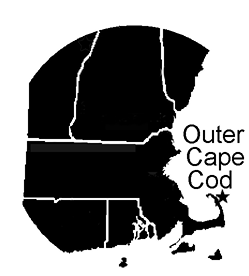 Cape Cod, the magnificent "arm" of Massachusetts that protrudes 65 miles into the Atlantic Ocean, provides some of the best opportunities for observing pelagic bird species from land on the East Coast if not the entire United States. Miles of sandy beaches coupled with the Cape's proximity to important feeding grounds such as Stellwagen Bank National Marine Sanctuary create a slam-dunk opportunity for observing seabirds. Seabirds are a major draw but not the only source of solid birding on the Outer Cape in winter. Wooded hollows and meandering streams attract winter-hardy passerines; kettle ponds attract ducks and gulls.
Cape Cod, the magnificent "arm" of Massachusetts that protrudes 65 miles into the Atlantic Ocean, provides some of the best opportunities for observing pelagic bird species from land on the East Coast if not the entire United States. Miles of sandy beaches coupled with the Cape's proximity to important feeding grounds such as Stellwagen Bank National Marine Sanctuary create a slam-dunk opportunity for observing seabirds. Seabirds are a major draw but not the only source of solid birding on the Outer Cape in winter. Wooded hollows and meandering streams attract winter-hardy passerines; kettle ponds attract ducks and gulls.
This article focuses on productive winter birding locations from the tip of Provincetown to the Orleans Rotary. It includes traditional birding hotspots and also discusses lesser-known locations for readers to incorporate into a day of birding on outer Cape Cod from December through March. Explore the area with an open mind and warm winter coat and you are sure to be rewarded. (See Figure 1. Overview of Outer Cape Cod. ).
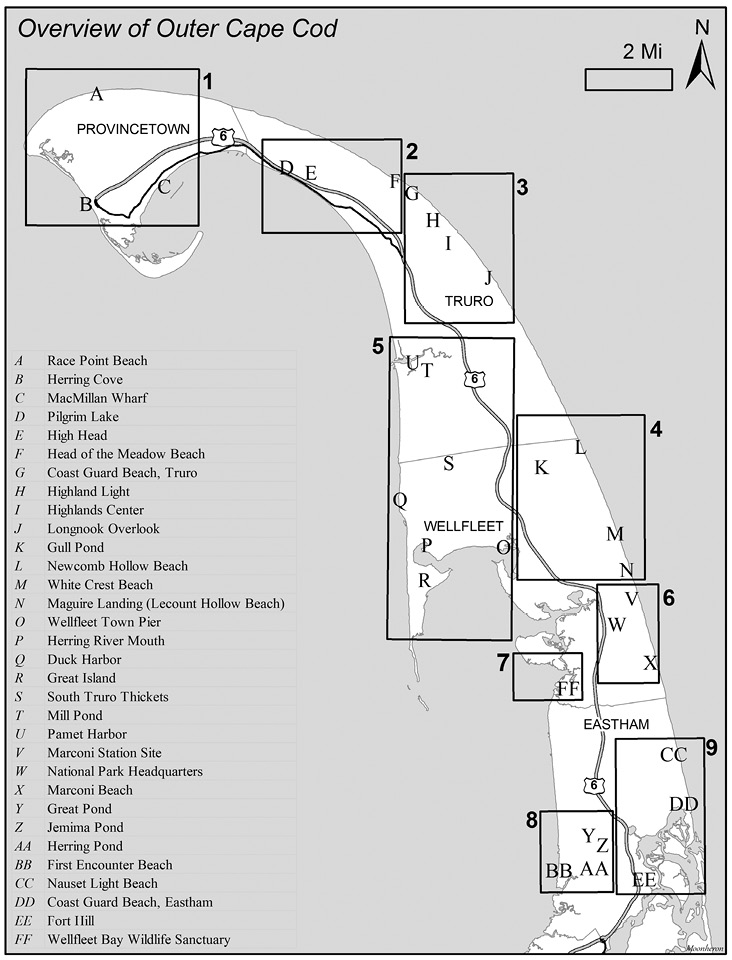
Figure 1. Overview of Outer Cape Cod.
Be Prepared
The weather on Cape Cod can be unpredictable and unforgiving. Shifting winds and storms coming in off the Atlantic Ocean can turn a calm and mild day into one that is brisk, windy, and snowy. The wind chill factor, particularly from the northeast winds, generates bitter temperatures on the outer beaches. Dressing in layers is essential. A windbreaker or rain jacket can be extremely effective as an outer layer, and down or nanopuff jackets offer good insulation. Hats, scarves, balaclavas, gloves, long johns, warm socks, and even hand and foot warmers can make the difference on a frigid day between shivering and being comfortable and warm.
Pack a towel and a change of socks and shoes in case you get wet. Warm winter boots may make walking difficult on long hikes, but they are excellent footwear for sea watching sessions. Bring snacks and plenty of water, especially on long walks. Pack the car with more food and beverages than you think you'll need because it is often difficult or inconvenient to find a place to eat on the Outer Cape in winter.
A Note on Food and Facilities
Tourism is seasonal on Cape Cod. Many restaurants, shops, and public facilities close for the winter, so it's a good idea to call ahead. The restaurants listed below are open year-round as of 2018, but there's no guarantee in the future. In Provincetown, you will be able to find a place for lunch in town. Far Land Provisions stays open year-round. Napi's, which is open for lunch off-season only (it serves dinner year-round), provides a warm respite from the cold if you want to linger a bit.
Few restaurants are open for lunch along Route 6 between Provincetown and the Orleans Rotary. Box Lunch restaurants in Truro and North Eastham, Dunkin' in Wellfleet, and Savory & the Sweet Escape in Truro serve breakfast and lunch. The Hole in One/The Fairway Restaurant in North Eastham serves breakfast only. Savory, Dunkin' in Wellfleet, the Box Lunch and The Fairway have restrooms. The small Dunkin' in North Eastham does not have a restroom or a full menu. Cumberland Farms, a block away on Route 6, has coffee, snacks, and a restroom; it is open 24/7. You can find other reliably open restrooms at the Salt Pond Visitor Center in Eastham, Mass Audubon's Wellfleet Bay Wildlife Sanctuary (except from Christmas to January 3), the Provincelands Visitor Center near Race Point, Herring Cove Beach, and the MacMillan Wharf parking lot in Provincetown.
How to Use this Article
This article takes a sectional rather than a directional approach to birding the Outer Cape: locations that are in close proximity and make sense to visit together are consolidated into units. The amount of time one spends at each of these units will vary depending on location and the amount of daylight during short days of winter. Plan to explore two to four units on a typical day of winter birding. Or piece together a route based on the type of birds you want to find. A good seabird route starts as early as possible at Race Point, then heads to Herring Cove, Macmillan Wharf, Head of the Meadow, Coast Guard Beach in Truro, Longnook Overlook, Newcomb Hollow Beach, White Crest Beach, Maguire Landing at Lecount Hollow Beach, Coast Guard Beach in Eastham, and ends at First Encounter Beach. For a day of winter passerines, start early at High Toss, Bound Brook Island, and Old County roads while they are still quiet, then cross Route 6 to North and South Pamet roads; head east on Route 6 to Highland Light and Highlands Center, then drive back to Marconi Headquarters, Wellfleet Bay Wildlife Sanctuary, and end the day at Fort Hill.
To handle wintry winter, you can either brave the elements on long foot slogs, or bird from the car with coffee and a good lunch in hand. If the northeast wind is blowing your scope off the dunes on the Atlantic side, bird the bay side. Counterintuitive as it may seem, east-facing beaches are not worth birding during nor'easters. Stick to the bay during and after storms.
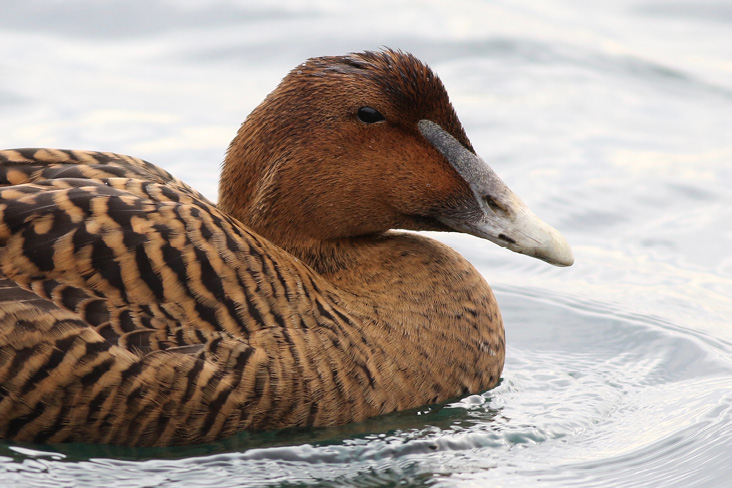
Common Eider. Photograph by Max McCarthy.
1. Race Point Beach, Herring Cove, and Macmillan Wharf
Perhaps the best-known seabirding location in Massachusetts, Race Point Beach in Provincetown earns its reputation with fantastic birding in the wintertime. Pretty much any winter bird that you want to see in the ocean can be encountered here: alcids, kittiwakes, gulls, gannets, loons, and grebes. This also seems to be the best location to find rarities like Glaucous Gull, Pacific Loon, King Eider, Dovekie, and Common and Thick-billed murre. Increasingly, shearwaters linger into early winter. Huge flocks of Snow Buntings and frequent sightings of one to three Snowy Owls provide an added bonus. Common Ravens have become regular here. In contrast to most other beaches along the National Seashore, the light is excellent early in the morning because it does not face east, and in winter the sun rises much more southerly than in the warmer months.
From the parking lot, it is approximately a two-mile walk to Race Point Light and the "rip," which can be brutal in soft sand and strong winds. Birding at Race Point can be great from start to finish, but the rip is well known for the most action, possibly due to the upwelling of food from the sharp change in water depth only a few hundred yards offshore. Iceland Gull, difficult to find elsewhere on the Cape, is practically the default gull here, Glaucous and Lesser Black-backed gulls are also likely, and Little Gull is possible. This is a great spot for alcid species, with Common Murre the specialty that is almost never seen anywhere else. The rip seems to be a favorite spot for Pacific Loons—occasionally, you can see two or three on a single outing. Northern Fulmar is possible, and Pomarine and Parasitic jaegers as well as Great, Sooty, and Manx shearwaters have been recorded into January in recent years. Rarities have included Ivory Gull (2010), Mew Gulls, King Eiders, Atlantic Puffins, and even Ancient Murrelet (1998). In the winter of 2016, a Yellow-billed Loon spent over a month here.
Walk past the rip and lighthouse to check Hatches Harbor. Red-breasted Mergansers, American Black Ducks, and Common Eider occupy the water here, and large numbers of gulls loaf on sandy outskirts of the harbor. Depending on how the topography of the sandbar has changed that season, it can be another mile walk to the entrance of Hatches Harbor.
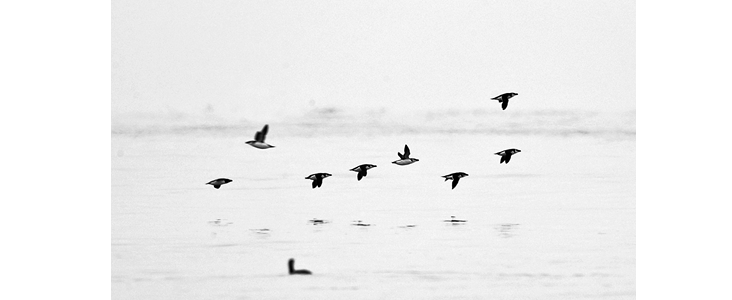
Razorbills in flight. Photograph by Tom Murray.
For easier walking conditions, take the Hatches Harbor fire road out to the lighthouse. This alternative route over well-packed sand offers a variation in habitat as well. To get to the trailhead from Race Point Beach, take Race Point Road past the airport (be sure to check the feeders around the airport for any passerines that are fueling up), and turn right onto Province Lands Road toward Herring Cove. Look for a small parking lot one mile down the road on the right. This lot has only a few parking spaces so if you are with a large group, meet at the Race Point Beach parking lot and carpool.
The walk is scenic and slightly more sheltered, passing through dunes with short pitch pines and wild cranberry bogs, then over a dike along the marsh in Hatches Harbor, and ending with desolate sand barrens with minimal vegetation. It is a straight shot from the parking area to the end of the dike where the sand dunes begin. Here, the trail becomes less defined and requires a bit of forethought to avoid a lot of additional walking. It also floods at high tide, so it is advisable to travel here at low or half-tide and plan accordingly for the trip back. When you drop over the dunes, turn left where the path connects with the road to the Race Point Lighthouse. On the return trip, follow the marsh edge from the beach back to the dike road; it can be productive for raptors and for open country birds such as Horned Larks, Lapland Longspurs, Snow Buntings, and sparrows.
Herring Cove is on the opposite side of Hatches Harbor from Race Point Light. The parking area is close to the beach and is a good location in inclement weather, as you can scope the ocean near the car. This is a great spot for sea ducks, loons, and grebes. Numerous gulls roost along the beach and on sandbars at the mouth of Hatches Harbor; walk there from the parking lot to get closer views. Due to damage from winter storms, the parking lot may be partially or almost entirely closed. According to the Cape Cod National Seashore, it is scheduled to be moved back within the next few years.
MacMillan Wharf is perhaps the best location in Massachusetts for getting excellent views and photographs of seabirds. Park at the MacMillan Wharf lot and bird either of the two piers, the northern pier (on the left if you are facing the harbor) typically being the more productive. The wharf is home to every plumage of pigeon imaginable, and often a Cooper's Hawk takes advantage of the abundant food source. Scope the ledges of the Pilgrim Monument for a Peregrine Falcon if it isn't actively dive-bombing the pigeons. Eiders and Long-tailed Ducks are common, and grebes, loons, and alcids may be found. Notably, Dovekie is usually annual here. Scope the breakwater for Great Cormorants.
2. Pilgrim Lake, High Head, and Head of the Meadow Beach
Pilgrim Lake, or East Harbor as the Cape Cod National Seashore calls it, is a large salt lake that is fed by the waters of Cape Cod Bay through a small culvert at the east end. It was a functional harbor until the 1868 closure of the 1000-foot wide inlet at its northwestern end. Gradually the lagoon became stagnant, shifted to fresh water, and the native estuarine fauna was replaced by non-native and invasive species such as purple loosestrife and phragmites. In 2001, the culvert that fed into Cape Cod Bay was opened to allow water to flow into Pilgrim Lake, and its health has improved dramatically. Historically, Pilgrim Lake has been excellent for birding and is likely to become more productive with the reestablishment of saltmarsh and estuarine habitats. In winter, from either direction on Route 6 you can safely pull well off the road, as long as there is no snow on the ground, for good views of Pilgrim Lake. When the water is open, this is a good spot for ducks such as scaup, Bufflehead, and a few Common Mergansers. Iced over, the lake attracts gulls, including Lesser Black-Backed and Iceland gulls. Scope the surrounding marshes for Northern Harrier and along the back dunes for the occasional Snowy Owl.
Head west on Route 6, turn onto High Head Road, and stop at the extensive marshes on both sides of the road to look for wintering rails. Keep driving along the paved road and take the left fork—a pothole-pocked dirt road that is the continuation of High Head Road—to a small parking area. There are two spots here that can be good for rails and thicket birds. One is the marshy area at the start of the ORV sand road. The other is the shrubby marsh at the beginning of the bike trail. The long, soft sand road ends with a view of the ocean where you might see huge rafts of eiders, and the two-mile bike trail ends at Head of the Meadow Beach. However, once you pass the marshy areas, these walks tend to be longer than they are productive.
The part of High Head that is more frequently birded is the upper section. Instead of taking the dirt road, follow Cliff Road up the hill. From here, you can see the Atlantic Ocean, Cape Cod Bay, the parabolic sand dunes, and Pilgrim Lake (which you can scope). The upper area is good for thicket birds and flights of winter finches in irruptive years. High Head is the best place on the Outer Cape for Northern Shrike and Rough-legged Hawk in winter. Rarities have included Ash-throated Flycatcher and Townsend's Solitaire. This area still supports a population of ever-dwindling Northern Bobwhites, but good luck finding them in winter when the males are silent.
Drive to Head of the Meadow Beach, a truly scenic location. Dovekies bob on the rolling waves, disappearing between the troughs. Distant feeding frenzies of gulls, gannets, kittiwakes, alcids, and occasionally late shearwaters are common here. Flocks of loafing gulls often include uncommon species, with multiple records of Little Gull in recent years. This is another location where you can bird from right outside your car, a plus in inhospitable weather.
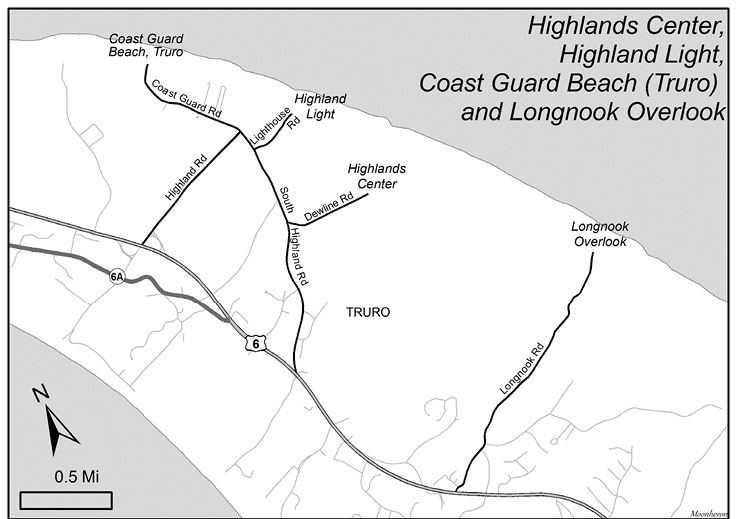
Figure 2. Highlands Center, Highland Light, Coast Guard Beach, and Longnook Overlook.
3. Highlands Center, Highland Light, Coast Guard Beach (Truro), and Longnook Overlook
Highlands Center can be good for songbirds in the winter. Take Highland Road east, turn right onto South Highland Road (passing Highland Links and Highland Light), turn left on Old Dewline Road, and park at the ball field. (See Figure 2. Highlands Center, Highland Light, Coast Guard Beach (Truro), and Longnook Overlook.) Formerly home to one of the country's first military radar facilities—the North Truro Air Force station—during the Cold War era, Highlands Center is now a science, education, and arts center; the Federal Aviation Administration operates a radar tracking station on part of the site. Walking around the area is an eerie experience, as many of the defunct, empty buildings remain, including several deteriorating houses of the military families who were stationed here. The old neighborhood, now overgrown with autumn olive, black locust, scrub oak, winged sumac, bayberry, and the ever-present pitch pine hosts winter passerines such as Yellow-rumped and Pine warblers and mixed flocks of chickadees, nuthatches, and woodpeckers.
The Highlands Center trail begins at Snake Road near the ball field, wends through the woods—also good for winter songbirds—then up the hill, turns left onto a paved road, and follows Sea Cliff Way back to the ball field.
Drive back to the Highland Light complex, which features a museum, a golf course, and the lighthouse—all of which close for the winter. Also known as Cape Cod Light, it is the oldest and tallest lighthouse on the Cape. The original was built in 1797. The current lighthouse, built in 1857, was relocated 450 feet back from an eroding cliff in 1996. You can walk to the site of the old lighthouse and scope the ocean for seabirds. The golf course can be a good spot for raptors, late or early Killdeer, and finches in irruption years.
After exiting the Highland Light parking lot, turn right onto South Highland Road, which almost immediately becomes Coast Guard Road, and follow it to the end. This is Coast Guard Beach in Truro, not to be confused with Coast Guard Beach in Eastham. There are four or five spaces that face the ocean and you can bird from or near the car. Many of the pelagics that you'd find at Race Point are here. Gulls are plentiful, with the occasional Iceland or Glaucous gull. Small flocks of Bonaparte's and Black-legged Kittiwakes may fly by.
Another birding location for wet or frigid weather is the overlook at Longnook Beach. From Route 6, take Longnook Road to the beach parking lot, which is at the edge of an eroding dune. Here, you can scope the ocean from a good elevation. Bird from the parking lot or walk up the short path at the northeast corner of the lot for an excellent vantage point.
4. Gull Pond, Newcomb Hollow, White Crest Beach, and Maguire Landing (Lecount Hollow Beach)
Appropriately named, Gull Pond attracts myriad gulls in the winter that fly back and forth to Newcomb Hollow Beach. A short walk down the dune and along the beach leads to huge flocks of gulls. Many Lesser Black-Backed and Iceland gulls can be found as well as the occasional Glaucous Gull or kittiwake. This is a fantastic area for the birder who enjoys scanning large groups of birds for the occasional rarity. To reach these sites from Route 6, take Gull Pond Road. For Gull Pond, turn left onto Schoolhouse Hill Road, turn right at Gull Pond Landing, and park in the unpaved area. For Newcomb Hollow Beach, remain on Gull Pond road, turn left onto Gross Hill Road, turn left again to stay on Gross Hill Road/Ocean View Drive, and follow it to the beach.
White Crest Beach and Maguire Landing (Lecount Hollow Beach) are south of Newcomb Hollow Beach, just a short ride down Ocean View Drive. The parking areas are at elevation, providing good visibility of the ocean below. With the right setup in inhospitable weather, you don't need to leave the car to bird. Razorbills, gannets, Red-throated Loons and other seabirds are likely at all the ocean overlooks. At White Crest Beach, check the scrubby hollow in the overflow parking area across the road for winter-hardy passerines such as Yellow-rumped Warblers.
5. Wellfleet Harbor to South Truro Thickets
To reach Wellfleet Harbor from the south, turn left onto Main Street from Route 6 at the traffic light just beyond the Mobil station. In 0.25 mile, turn left onto East Commercial Street and follow it to the Wellfleet Town Pier. (See Figure 3. Wellfleet Harbor and South Truro thickets.) Inner Wellfleet Harbor hosts winter ducks, gull, and sometimes Dunlin at lower tides. Rarities include Lesser Black-backed Gull and once a Slaty-backed Gull. The harbor is sometimes a good spot for Barrow's Goldeneye. Following nor'easters, alcids also may seek shelter here. These and other birds, such as Red-throated Loon, Common Goldeneye, Bufflehead, and Common Eider often can be seen and photographed at close range, much like at MacMillan Wharf.
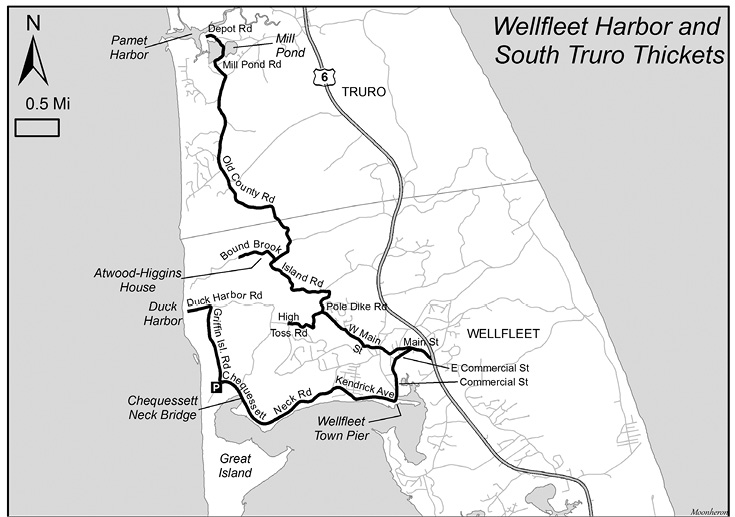
Figure 3. Wellfleet Harbor and South Truro Thickets.
When it makes a 90-degree turn at the pier, Commercial Street becomes Kendrick Avenue, and then merges into Chequessett Neck Road, which takes you to a bridge of the same name over the Herring River. The dike on the Herring River was built to exclude mosquitos and increase agriculture in the early twentieth century, but succeeded mainly in seriously degrading the habitat, causing oxygen depletion, massive fish kills, and conversion from salt marsh to monoculture of invasive phragmites. Despite this, the river upstream of the dike hosts breeding birds such as Clapper Rail, Saltmarsh Sparrow, and even Least Bittern on occasion. Scan the harbor and river on either side of the bridge for ducks; the downstream side hosted Barrow's Goldeneye for several years in a row. After crossing Chequessett Neck bridge, turn right onto Griffin Island Road, which curves to the left to become Duck Harbor Road and leads to Duck Harbor Beach, a good spot for scanning Cape Cod Bay for large flocks of eiders, scoters, and mergansers, plus a few Horned Grebes.
For an ambitious hike out Great Island for shorebirds, sea ducks, marsh birds, and a chance of Snowy Owl, park in the National Seashore lot near the intersection, or in one of the two dirt lots on either side of the road just after the bridge. Be careful because super high tides sometimes flood the lower parking lot. The Great Island trail is a 3.9- to 8.8-mile round trip hike that takes roughly three to five hours depending on your route. In winter, it is essential to be mindful of the tides so that you don't get stranded out there when a high tide submerges the trail. Dress warmly and take plenty of water.
The back roads west of Route 6 in Wellfleet and South Truro, mainly Old County Road and associated side roads, feature some excellent thicket-birding opportunities that should not be missed, especially in winter. These thickets and adjacent wet areas provide abundant food for wintering birds, including warblers, Gray Catbirds, Eastern Towhees, Hermit Thrushes, and Winter Wrens. The best way to cover these thickets is to drive until you find a favorable habitat, then pull off the road in a safe place. Roving flocks of robins or roadside sparrows often help determine where to stop. For the birder out before sunrise or after sundown, it should be noted that these roads are particularly good for Northern Saw-whet Owls.
A series of roads that run north from downtown Wellfleet to "downtown" Truro includes Pole Dike Road, Bound Brook Island Road, and Old County Road. They all cross marshy tributaries of the Herring River and various wet thickets that can hold birds. Starting from downtown Wellfleet, follow West Main Street and Pole Dike Road to High Toss Road. Walk or drive carefully down High Toss Road as far as the small bridge over the Herring River, which is just a small stream at that point. This road has some nice cover and wet areas for birds, including a wet meadow and cattail marsh. Return to Pole Dike Road and turn left. Pole Dike eventually merges onto Bound Brook Island Road, which soon passes over a Herring River tributary. A quick left onto an old paved road will take you to the Atwood-Higgins house, a Cape Cod-style house built in 1730. The area has some decent thickets, and late-lingering phoebes seem to favor the old buildings.
After birding around the Atwood-Higgins house, you can continue west along the various dirt roads to bird more thickets ("Sooty" Fox Sparrow in January 2012) or return to Bound Brook Island Road and turn left, continuing up the road to a left fork that will take you onto Old County Road. Follow Old County Road and pay special attention to the hollows and thickets along the left. Upon seeing marsh on both sides of the road, bear left onto Mill Pond Road. Safely pull off the road near this fork to listen for rails. There is a parking area just beyond the pond, which can sometimes yield dabbling ducks and Hooded Mergansers. At the end of Mill Pond Road, turn left for a comfortable view of Pamet Harbor from the car. To return to Route 6 south, follow Depot Road to the end, and turn right. Alternatively, if you haven't had your fill of thicket birding, continue under Route 6 to explore North and South Pamet roads for more riparian thicket birds and views of the ocean from Ballston Beach at the end of the roads.
6. Marconi Beach, National Park Headquarters, and Marconi Station Site
Built on a high bluff, Guglielmo Marconi's transatlantic wireless station transmitted the first intercontinental wireless message between the United States and Europe in 1903. Less than 20 years later, the four wooden communication towers were demolished due to encroaching erosion. The sea has long since claimed the original site of the wireless towers. In 1974, farther back on the bluff, the Cape Cod National Seashore built an interpretive exhibit and scale model of the Marconi station under a structure that became a welcome shelter for birders scanning the ocean below. The dunes have been eroding at a rate of approximately three feet per year. In 2013, dangerously close to the edge of the eroding cliff, the structure was torn down.
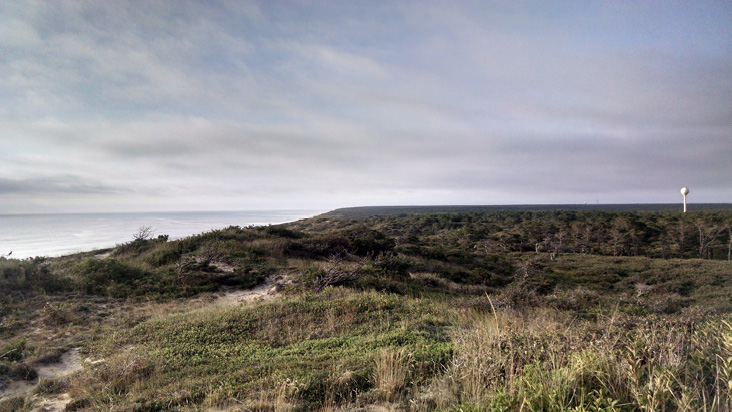
View over tree line at Marconi Station Site. Photograph by author.
The Marconi Station area is still an excellent place for sea watching. The observation overlook provides a fantastic vista of the ocean and a scenic view over the pitch pine-dominated tree line to Cape Cod Bay. Scanning the ocean here will commonly yield loons, scoters, razorbills, and gannets.
From Marconi Beach Road, turn left onto Marconi Station Road and follow it to the end. Drive leisurely and watch for lingering and winter passerines. When road conditions are adverse, the road may be closed past the headquarters building.
On the way back from Marconi Station, stop at the Seashore headquarters and check the feeders, the parking lot, and any of the adjacent open pitch pine woods. This area can be good for Eastern Bluebirds and Pine, Palm, and Yellow-rumped warblers. Check for both kinglets and Orange-crowned and other warblers in the flocks. Clay-colored and even Grasshopper sparrows have been present here in winter, and, incredibly, three Mountain Bluebirds wintered here in 1995.
Marconi Beach Road, which leads to the beach, is gated and may be closed in inclement weather. In years when winter storms have eroded parts of the parking area or damaged the stairs, the road may remain closed all winter and spring until the Park Service restores safe access. When the gate is closed, the 1.5-mile hike to the beach is probably not worthwhile.
The Marconi Beach parking lot can be a good spot for bluebirds, Cedar Waxwings, Horned Larks, and finches. The top of the stairs that lead to the beach is the best vantage point for scoping the ocean. Although not as elevated as the observation platform at Marconi Station, it is a useful place to keep in mind if you spot an interesting bird south of the wireless station site and you'd like a better look. The stairs may be closed due to erosion or inclement weather; even when they remain open, use your judgment before heading down to the beach. Walking along the beach offers little birdlife, but it is a scenic and quiet stroll in either direction with a chance of finding some loafing gulls.
7. Wellfleet Bay Wildlife Sanctuary
One of the best and most beautiful birding spots on the Outer Cape in every season is Mass Audubon's Wellfleet Bay Wildlife Sanctuary. It has the longest species list of any eBird hotspot on Cape Cod—301 species as of October 2018. Include a visit on your way to or from Marconi or First Encounter beaches. Winter rarities here have included Lazuli Bunting, Golden Eagle, Hoary Redpoll, Ash-throated Flycatcher, and Rose-breasted Grosbeak. A detailed article about birding Wellfleet Bay appears in Bird Observer Volume 4, Number 4, August 2016 and online at:
8. Great Pond, Herring Pond, and First Encounter Beach
You can reach Great Pond, Herring Pond, and First Encounter Beach by taking Samoset Road off Route 6 in Eastham. (See Figure 4. Great Pond, Herring Pond, and First Encounter Beach.) Start at Herring Pond because it tends to be the more productive of the two ponds with better variety, larger numbers, and more rarities. When you get to the four-way stop on Samoset, turn left onto Herring Brook Road and in less than 0.5 mile take a left into the narrow entrance to the Herring Pond parking lot. It's easy to miss; if you come to Crosby Village Road, you've gone too far and need to turn around.
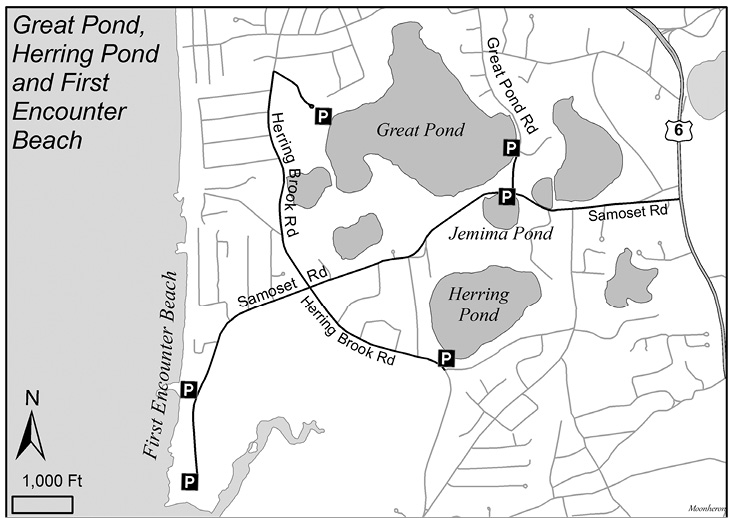
Figure 4. Great Pond, Herring Pond and First Encounter Beach.
Herring Pond supports many species of dabbling and diving ducks. American Wigeon, Mallard, Green-winged Teal, Ring-necked Duck, Bufflehead, Common Goldeneye, Hooded Mergansers, and Ruddy Ducks are regular. You may sometimes find Greater and Lesser scaup and Common and Red-breasted mergansers, and there's a chance for rarities such as Canvasback and Redhead. The pond seems to be a favored location for Eurasian Wigeon. Any rare dabblers that are wintering in the area, such as Northern Shoveler and Northern Pintail, can be found here, though ducks move between ponds during the day. American Coots, which are hard to find on Cape Cod, frequent Herring Pond (high count 250 in January 2013). Also look for Common Loons and Pied-billed Grebes.
If there are no Hooded Mergansers at Herring Pond, retrace your route back up Samoset and stop at Jemima Pond, the small pond on the right. You may find up to a couple dozen of Hoodies here.
Next, turn left onto Great Pond Road to access the eastern and more open side of Great Pond. Sometimes the pond is good for loons, Double-crested Cormorants, Pied-billed Grebes, and diving ducks, but other times it's quiet. This is a good place to try for the merganser sweep as all three can occur here in winter. There is always a gull flock in the center of the pond that you should check for interesting species.
You can bird the northwest side of Great Pond from Wiley Park, which is off Herring Brook Road. This side of the pond is more protected from the wind, and the ducks may differ. You will also find woodpeckers, Black-capped Chickadees, Tufted Titmice, and Red-breasted and White-breasted nuthatches when you walk to the pond from the Wiley Pond lot.
First Encounter Beach was named to commemorate the first contact between the Pilgrims and Native Americans of the Nauset tribe, but for birders it is a famous post-storm site. When the winds shift northwestward following a nor'easter, First Encounter provides some of the most exciting seabirding in the eastern United States. Huge flights of pelagics—many of them rare—that get blown into Cape Cod Bay during storms are funneled past this beach as they attempt to exit the bay. The first parking lot is a great spot to scan the bay (from the car in adverse weather). Higher tides are better – seabirds are quite distant when the tide is low.
Some eye-popping high counts include 1,100 Pomarine Jaegers (October 1991), 10,000 Red Phalaropes (December 1992), and 13,500 Razorbills (December 2012). Other alcids seen at First Encounter include flocks of Dovekie, Common and Thick-billed murres, and Atlantic Puffin (a high of 24 in November 2004). Also recorded on the same day in December 2012 were 6oo Black-legged Kittiwakes and 625 Northern Gannets. Cory's, Great, Sooty, and Manx shearwaters and Northern Fulmars get blown over here as well.
Drive down to the south lot, where you can walk a short trail that leads to the salt marsh and the inlet of Eastham's Herring River. On a falling tide, the sandbars here fill with gulls and winter shorebirds such as Sanderlings, Dunlin, and maybe a Black-bellied Plover. Several narrow footpaths traverse the sand between the parking lot and the beach. This is a good place for Horned Larks hunkering down on windy days; otherwise look for them flying around the marsh and dunes, occasionally with a Lapland Longspur among them. The marsh can be productive for geese, ducks, and harriers. Look for Peregrine Falcons near the beach and dunes and the beach, and Cooper's Hawks and Red-tails anywhere along the road.
9. Nauset Light Beach, Coast Guard Beach, and Fort Hill
Nauset Light Beach is worth a quick stop if you have extra time or you want to bird close to your car when the weather is inhospitable, but Coast Guard Beach is the main attraction. The seabirding is superior there because of the presence of an inlet to a major estuary, and Nauset Marsh attracts additional winter species.
Follow the signs to Coast Guard Beach from Route 6. In winter, you can park up at the main lot. Take either the short path north of the former Coast Guard station to an observation spot above the beach or walk down to the beach. Scan the ocean for sea ducks—Common Eider, all three scoters, and Red-breasted Mergansers—Common and Red-throated loons, Red-necked Grebes, Northern Gannets, Black-legged Kittiwakes, and lots of gulls. Alcids are less common here than at Race Point or the Truro and Wellfleet beaches, but you may find Razorbills. A short walk on the beach in either direction may yield a Snowy Owl atop one of the dunes.
When you've had your fill of seabirding, head to the Nauset Marsh overlook at the southern end of the parking lot and scan the marsh. Large numbers of Brant and Canada Geese inhabit the marsh, and Snow Goose has shown up in recent years. Dabbling ducks such as Gadwall, Mallard, Black Duck, and Green-winged Teal are common, with the occasional Northern Pintail. Divers such as Bufflehead and Hooded Mergansers are found in deeper water. Careful observation of the marsh may yield a bittern within or a harrier gliding above. Look for Snowy Owls in the dunes or sitting out on the marsh. Thickets below the parking lot invariably host Yellow-rumped Warblers and should be checked for less common passerines.
You can also view Nauset Marsh from the bike trail bridge, where you may spot late Greater Yellowlegs. White-rumped and Western sandpipers have turned up among the wintering Dunlin flock. Either walk down the paved bike trail or follow a short path through the woods at the southwest edge of the parking lot. This wooded trail can be productive for Hermit Thrush and other interesting wintering birds.
If you want stay outdoors longer, walk south along the beach and head around the spit for an amazingly scenic hike with chances for large numbers of loafing gulls and Horned Larks, Snow Buntings, Eastern Meadowlarks, and Snowy Owls in the dunes. Lapland Longspurs and ‘Ipswich' Savannah Sparrows are always possible. One of the state's first Slaty-backed Gulls was found at the tip in December 2007.
Nauset Marsh is flanked by Coast Guard Beach on one end and Fort Hill on the other; both are premier birding spots on the Outer Cape. The area surrounding Fort Hill was farmed for more than 200 years and is currently being managed as Cultural Grassland by the Cape Cod National Seashore. The birding from Fort Hill, like the view, is spectacular all year, especially when combined with the adjacent Red Maple Swamp Trail for added habitat and species diversity. . It's worth spending two to three hours exploring these trails, but if you don't have time, birding the two parking lots will yield a decent number of species.
You can park at either the lower or upper lots, but the upper lot takes advantage of the panoramic views. Set up your scope and scan Town Cove and the channels of Nauset Marsh for ducks and wintering Sanderling and Dunlin on exposed mudflats or floating shellfish beds; Nauset Beach for distant Snowy Owls; the salt marsh for American Bitterns, Great Blue Herons, Northern Harriers, crows and gulls; and the upland fields for harriers, Cooper's and Red-tailed hawks, and Eastern Meadowlarks. Meadowlarks will use these fields as a wintering ground, flying out to feed in the adjacent salt marsh on low tides. Then put your scope back in the car and walk down the trail.
A small grove of trees and a shrubby thicket on the right hold common resident species such as Downy Woodpeckers, Northern Mockingbirds, Black-capped Chickadees, Song and Savannah sparrows, Northern Cardinals, and American Goldfinches, but you may find surprises such as Yellow-breasted Chat.
When you reach the huge rock, turn right and follow the spur trail along the southern edge of Nauset Marsh to a small cattail marsh, which is the most productive place for Yellow Rail, Marsh Wren, Sedge Wren (rare), and LeConte's, Saltmarsh, Nelson's (inland race and Acadian), and Seaside sparrows. The phragmites along the east side of the marsh are also good for many of the skulky marsh birds, especially American Bitterns, when high tides push them up the marsh.
Retrace your steps to the huge rock, and follow the Fort Hill trail to Skiff Hill and Indian Rock, watching for meadowlarks in the fields on the left and bitterns in the marsh on the right. At Indian Rock, follow the paved Red Maple Swamp trail north toward Hemenway Road, stopping at the overgrown overlooks for glimpses of winter ducks. A quick detour to Hemenway Landing, another scenic view, should be productive. Return to the Red Maple Swamp trail and follow the boardwalk through the swamp, where you may find flocks of robins, Cedar Waxwings, and Golden-crowned Kinglets, as well as Blue Jays, crows, Northern Flickers and other woodpeckers. By the end of 2018, the boardwalk spur may have reopened, but this was never a particularly birdy detour.
At the end of the boardwalk, the trail through the woods yields woodpeckers, chickadees, titmice, and both nuthatches, and it is worth looking for Brown Creepers and wintering warblers. When you reach the field, turn right and head to the lower parking lot.
The thicket adjacent to the lower lot can be fantastic for winter specialties like Fox Sparrow and Yellow-breasted Chat. Winter rarities over the years have included Mountain Bluebird, Bell's Vireo at least twice, Lark Sparrows, Painted Bunting, Western Kingbirds, and Ash-throated Flycatchers. If you plan to spend only a short time at Fort Hill, this lot should not be missed.
You can return to your car by walking the road to the upper lot or taking the trail through the woods behind the Penniman House, where you may find robins, Eastern Bluebirds, Hermit Thrushes, Carolina Wrens, White-throated Sparrows, and Red-winged Blackbirds. The last part of the trail cuts across the field where, toward winter's end in March, you may see and hear American Woodcock displaying at dusk.
References
Special Thanks
The author would like to thank David Clapp, Mark Faherty, Marsha Salett, and Wayne Petersen for their contributions of historical knowledge of the area to this article.
Nate Marchessault is an avid birder and wannabe naturalist from Mattapoisett, Massachusetts. When he's not soliciting people for Where to Go Birding articles for Bird Observer he usually can be found leisurely strolling outdoors enjoying the flora and fauna of Cape Cod and the surrounding area. He's an active member of South Shore Bird Club and enjoys leading walks with Buzzards Bay Coalition to educate and inspire those interested in birds and nature.